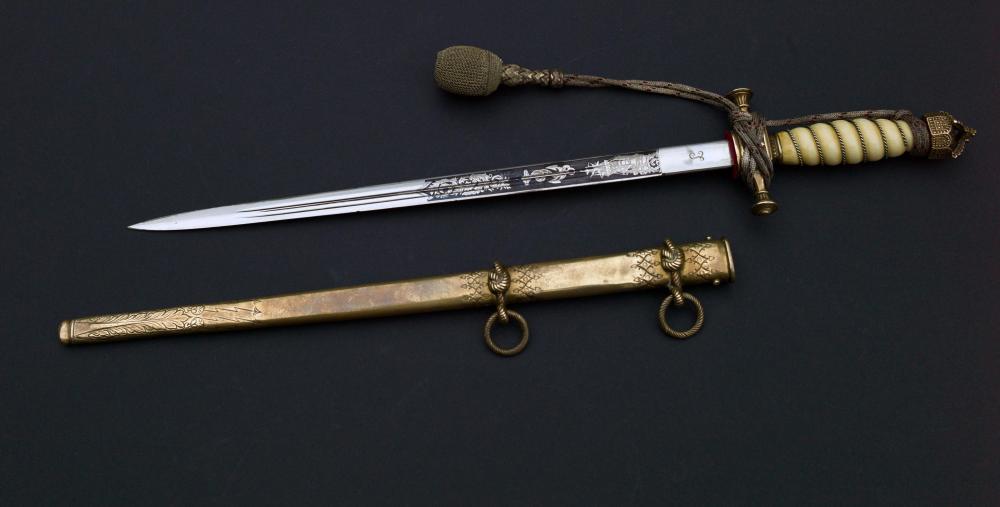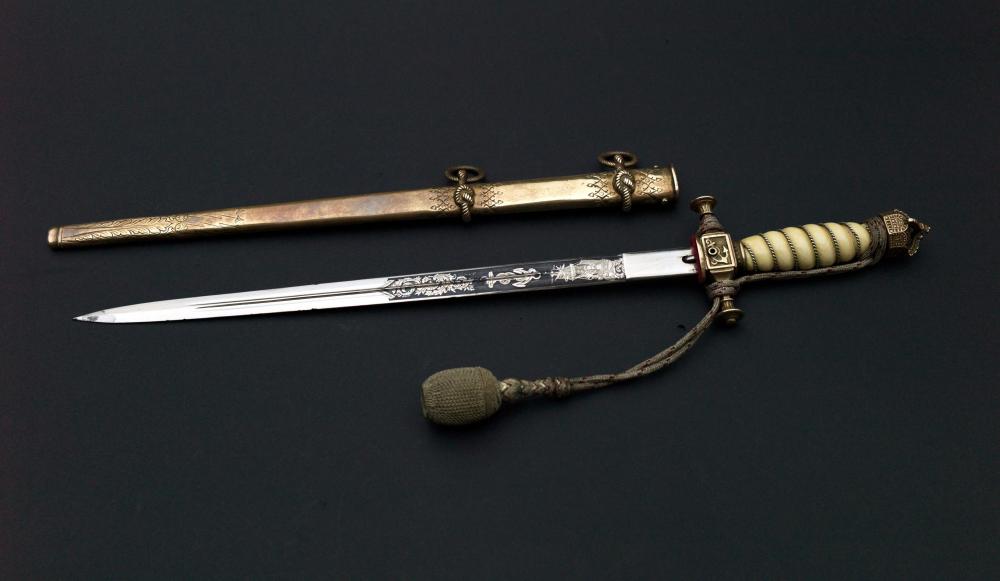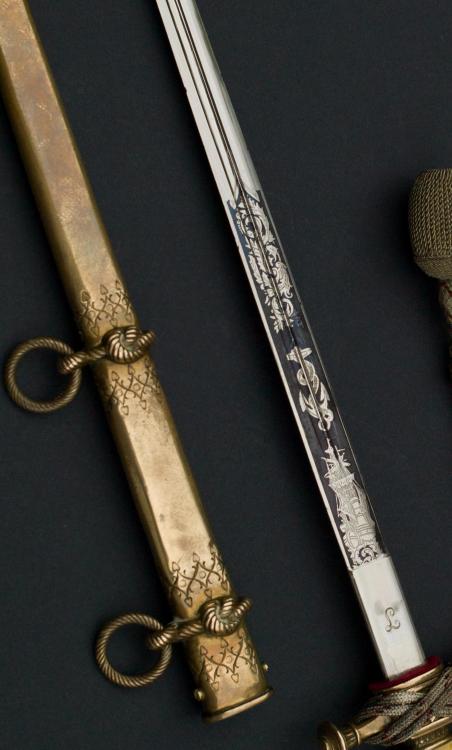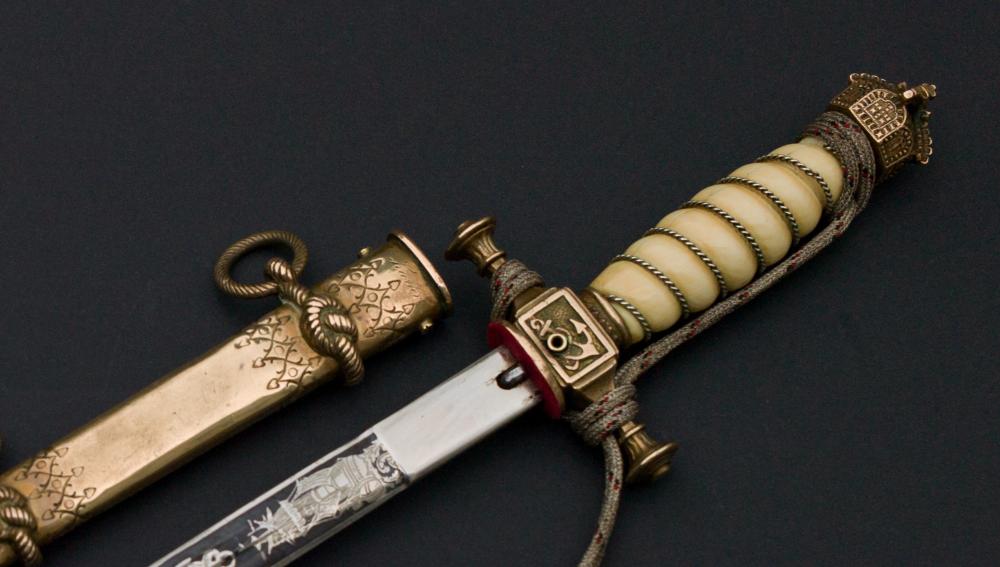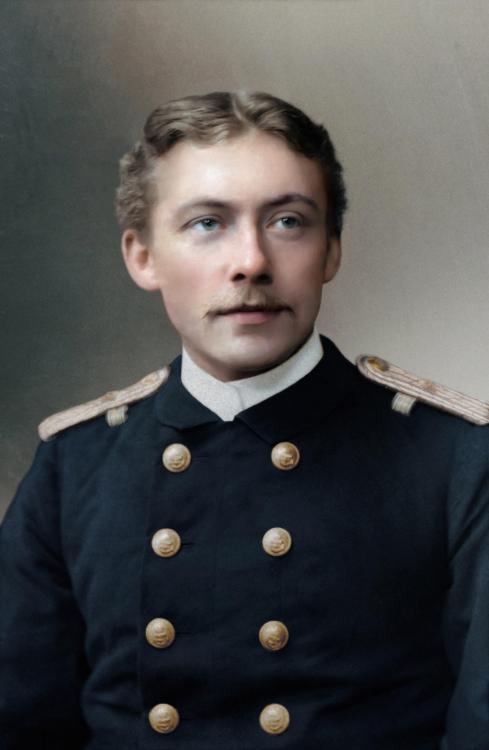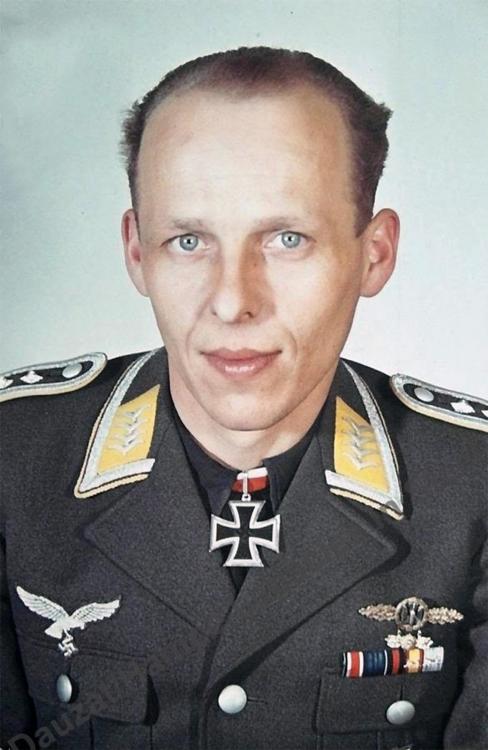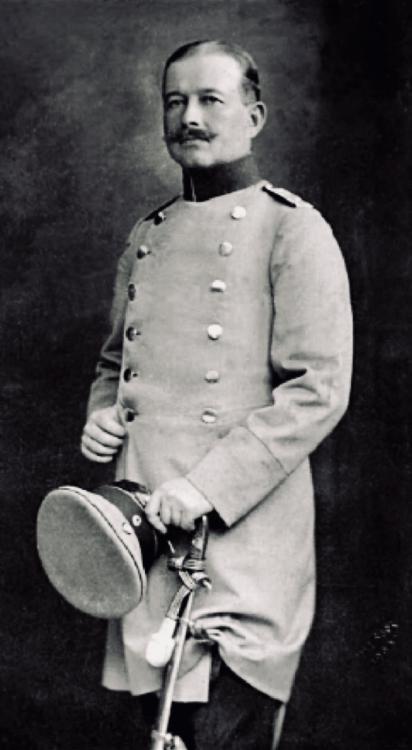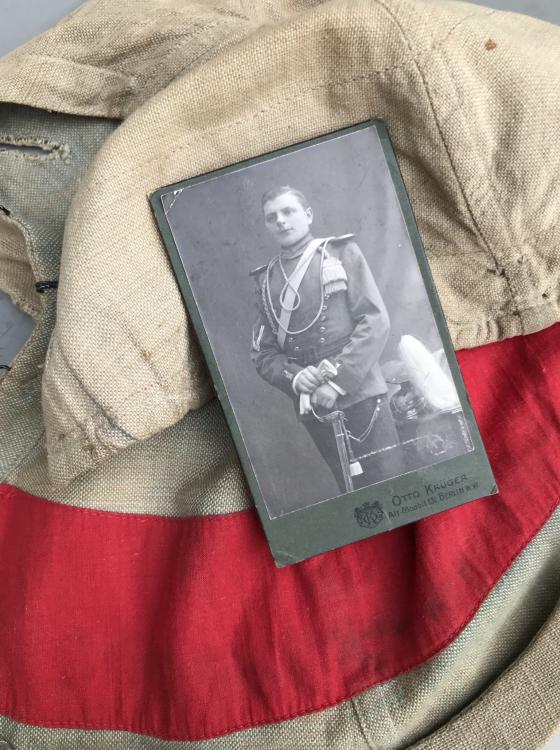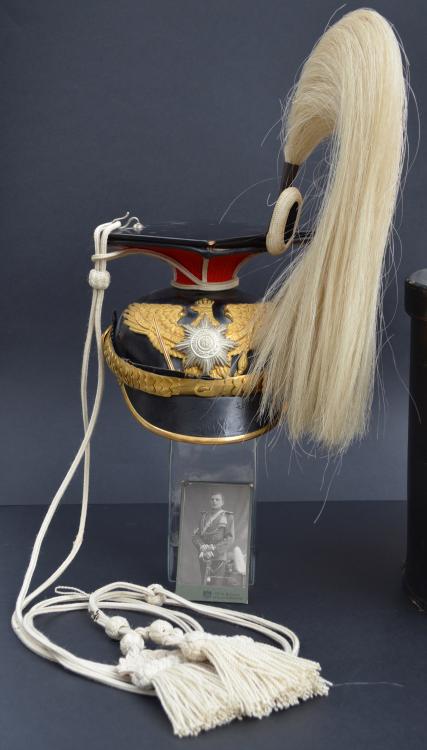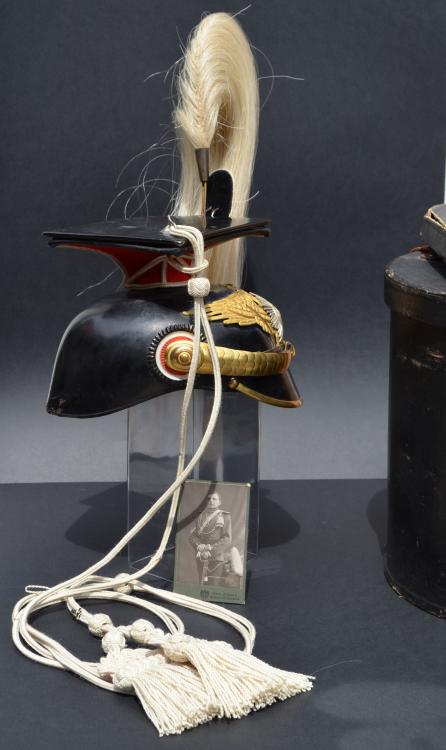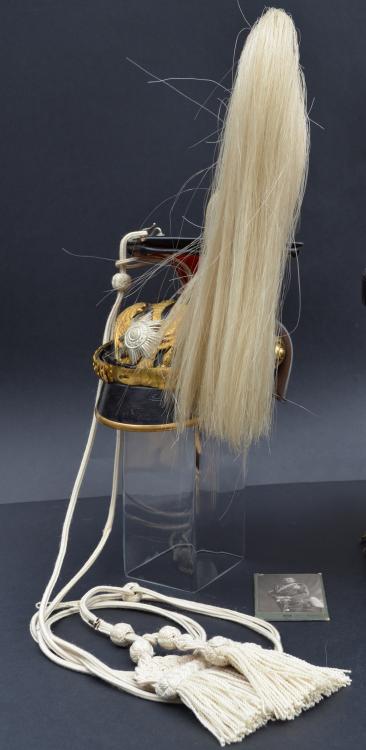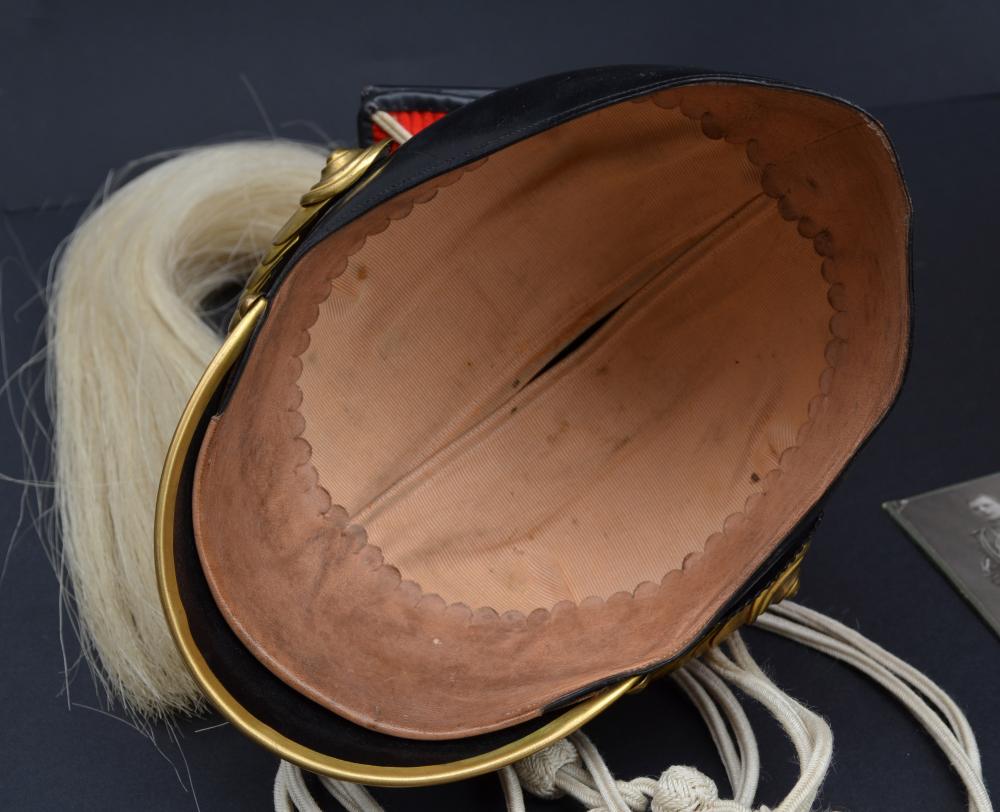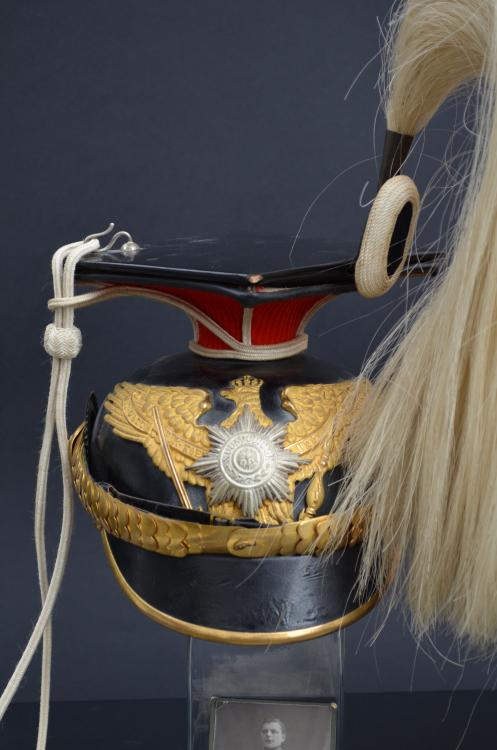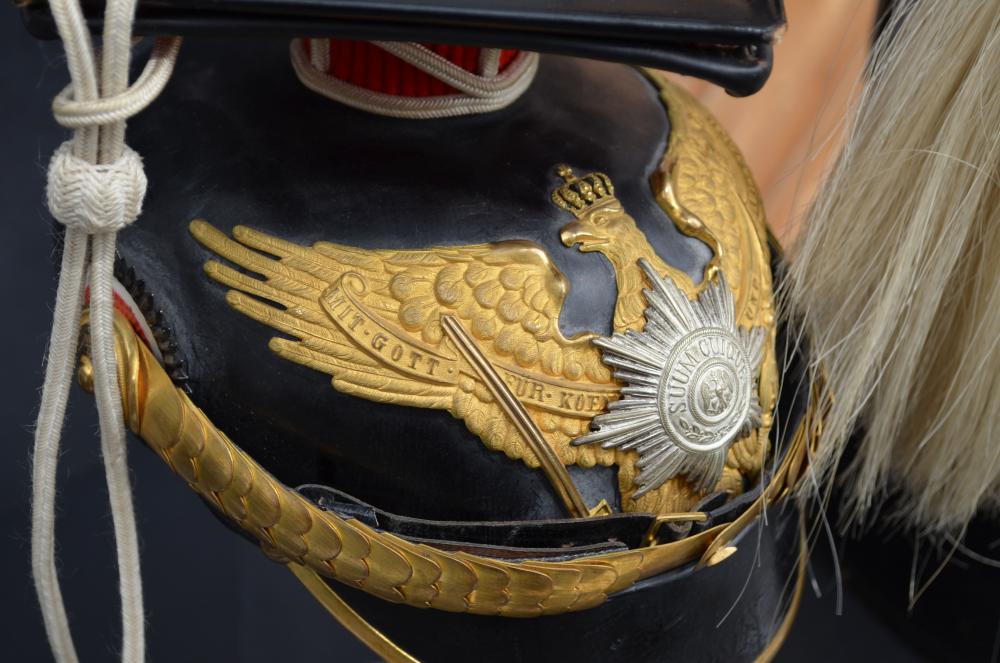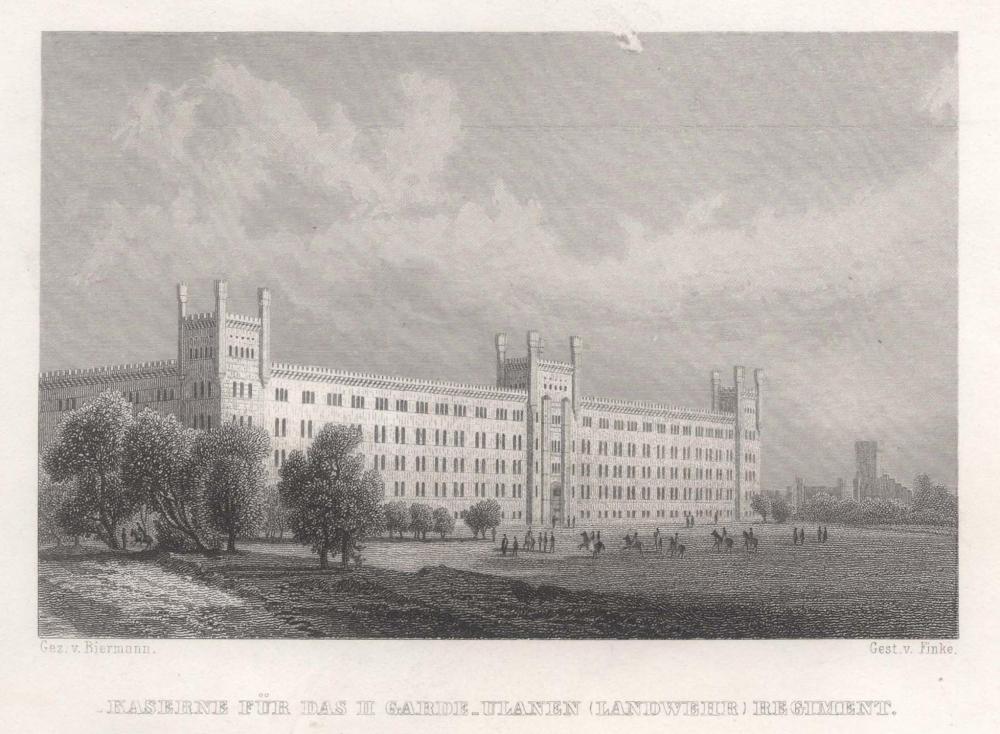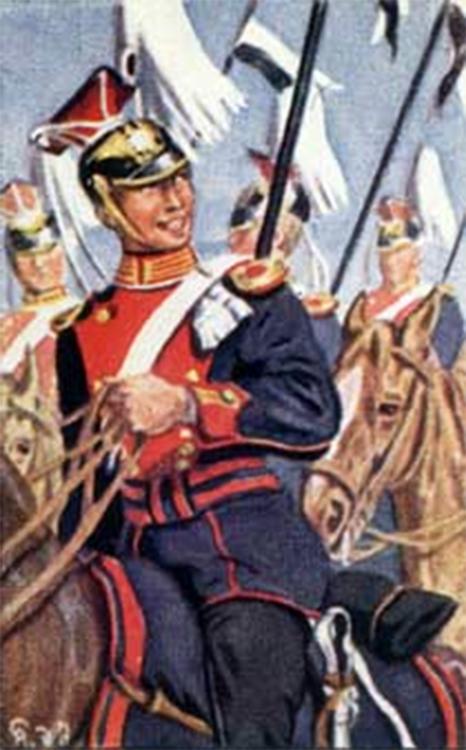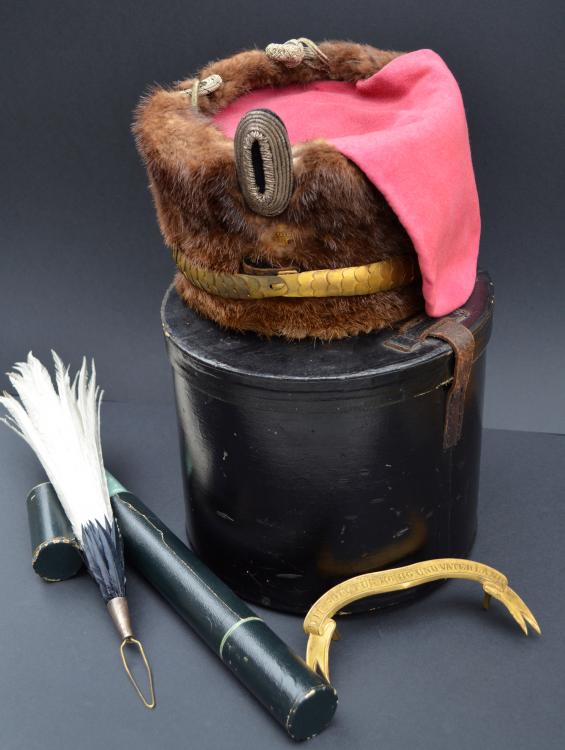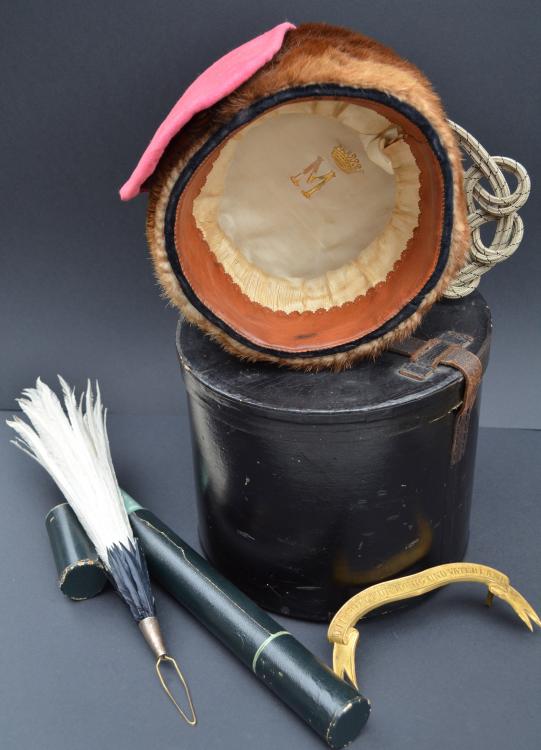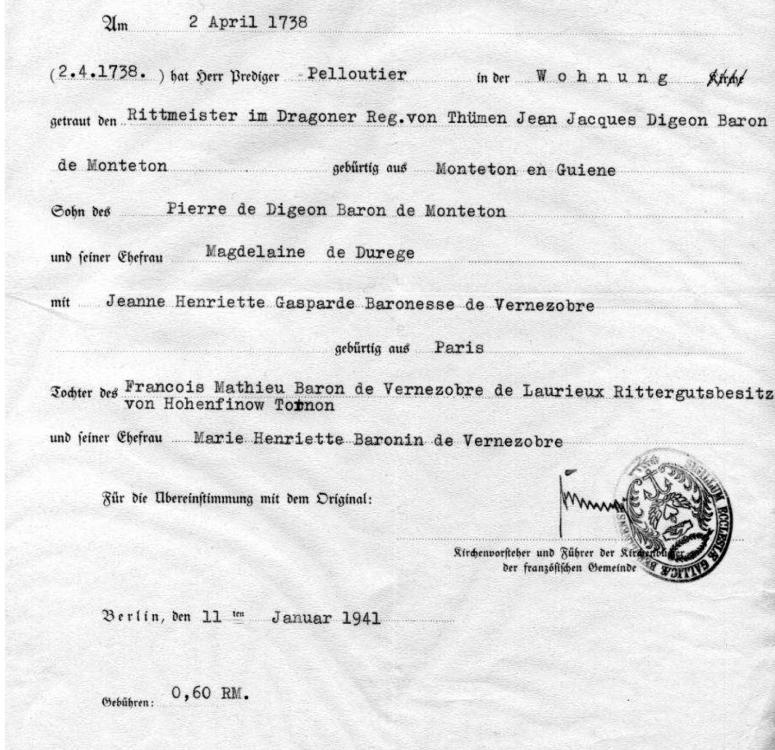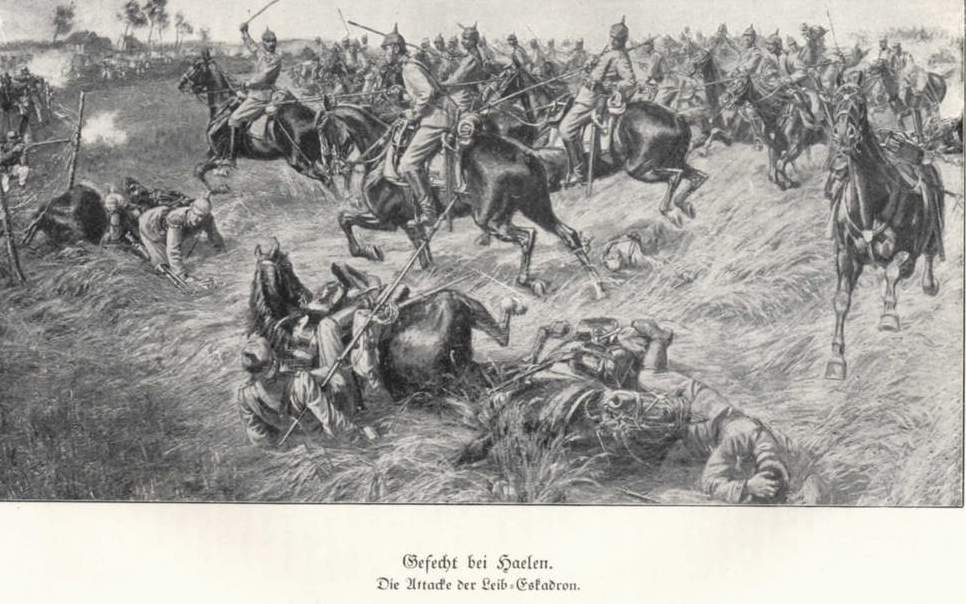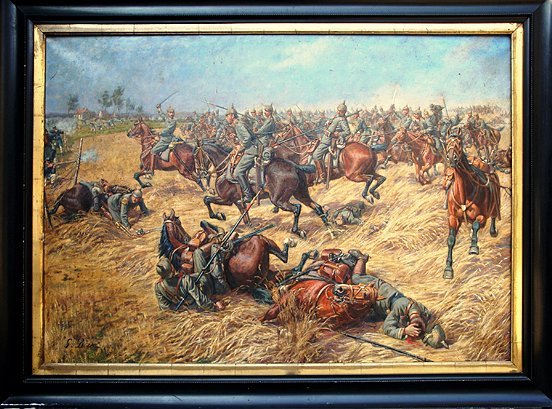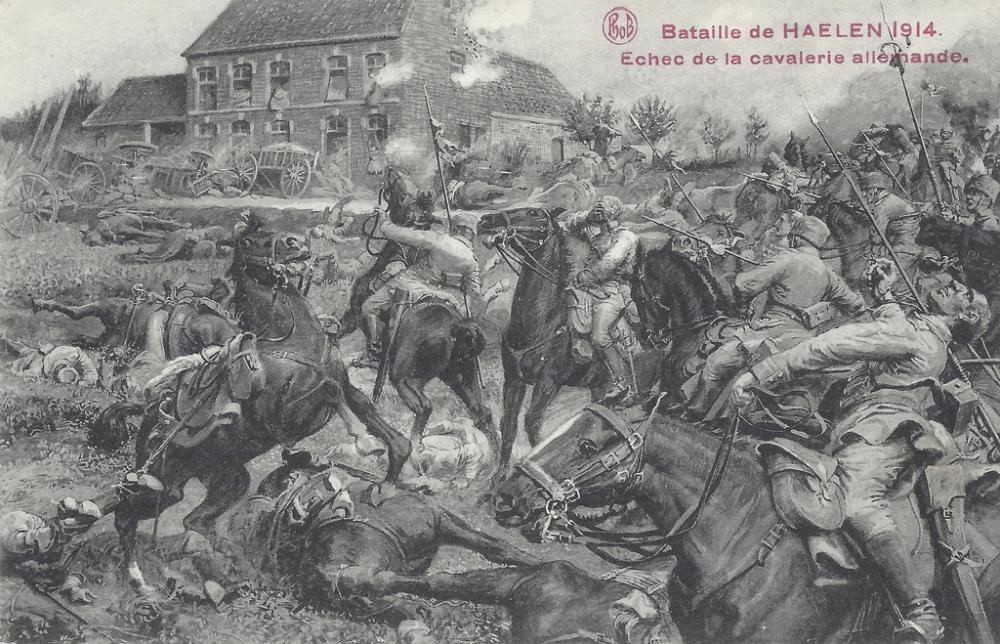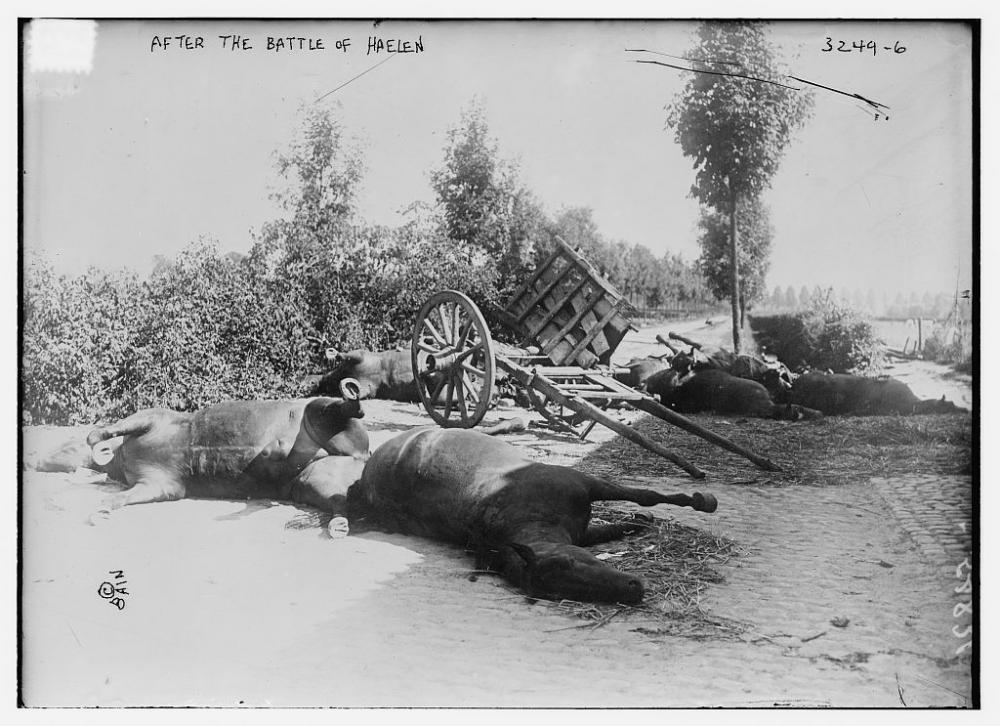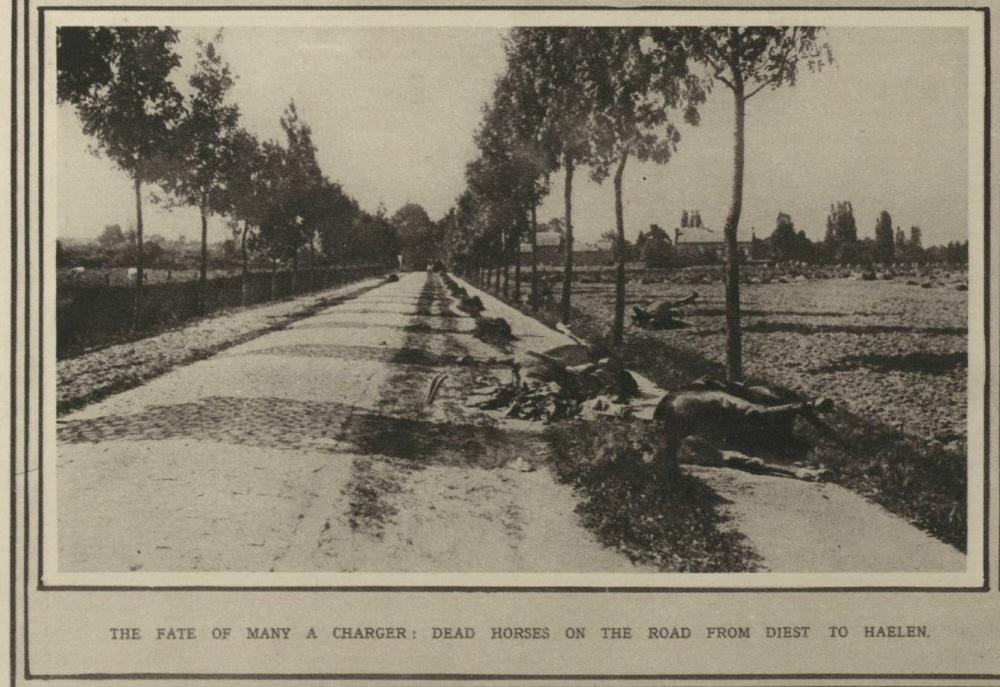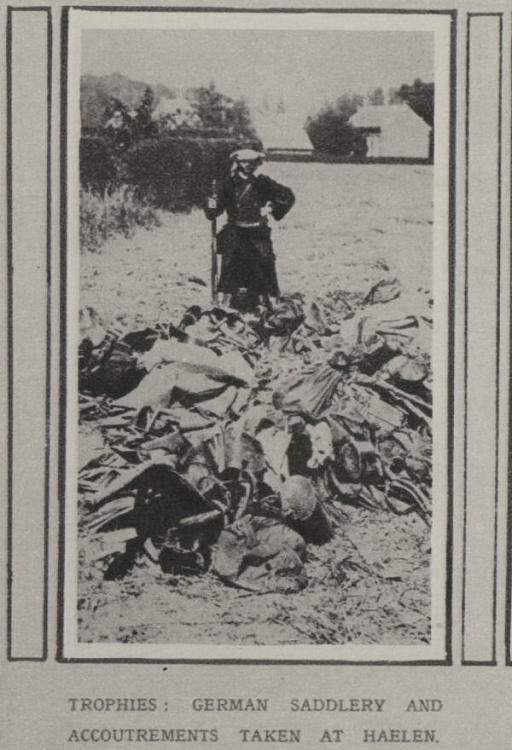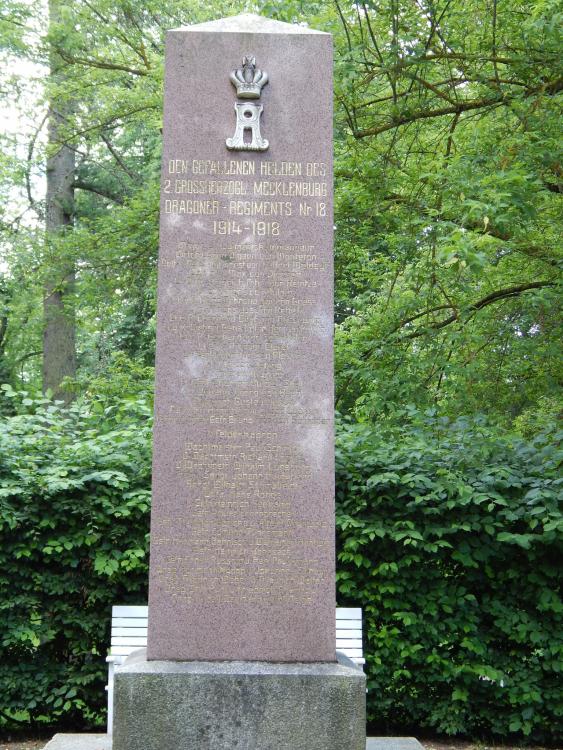-
Posts
263 -
Joined
-
Last visited
Content Type
Profiles
Forums
Blogs
Gallery
Events
Store
Everything posted by Flyingdutchman
-
Gentlemen, I've just received a small Christmas present from our artist Klimbim, unfortunately the colored version didn't made it into our new book. It is the brother of the German Emperor, Prince Heinrich in uniform of the DFAC, the German Automobile Corps. Some photos of the sidearm he is wearing, which is extremely rare, especially with the original portepee, attached as well. The Hirschfaenger has no hunting motives whatsoever, on the contrary: The blade shows only military ornaments. If you are interested to read more, you will find an old article in the www archive: German Imperial Automobile Corps. Thanks for looking. Best; Flyingdutchman ... blade detail
-
Gentlemen, because we did an entire book about personalized German edged weapons I would like to introduce a dagger which not made it in the book here. The story is quite long, but hopefully its a good read and explains how interesting collecting can sometimes be. Any thoughts greatly appreciated. Thanks for looking. Best; Flyingdutchman The Rear-Admiral William Kutter Dagger Imperial Naval daggers were bought by officers in a wide range of variations. We see daggers with Damascus blade in nearly every size, nickel plated and plain blades. Nearly every navy-issued dagger for Cadets was named, but officer daggers with the open crown - purchased and selected personally by officers - are scarce. The likely reason is the fact that they were customized by the officer himself so that the risk of confounding them was low. Daggers for Naval Officers according to 1901 regulations In September 1901 a meeting of the German and Russian fleets was held in Danzig, with Emperor Wilhelm II and his cousin Tsar Nicholas II. During an evening dinner the German Kaiser, in acknowledgment of rendered services by the German maneuver units, allowed the Naval Officers Corps the re-introduction of the easy-to-wear dagger for marine officers. This also elegantly paid an indirect compliment to the Russian Tsar as all Russian naval officers carried a dagger; the Russian Navy was seen as an exemplary model for the German Navy. Correspondingly the Cabinet order for the re-introduction of navy officers’ daggers from September 13, 1901 was mentioned several times by the Russian Tsar. This was a noteworthy example, showing how a more-or-less simple military regulation was embedded in a diplomatic context. Regrettably, in his public appearances, the Kaiser lacked such diplomacy almost completely. The prescribed dagger was virtually identical with that of the sea cadets but had an open crown and grip-wire around the hilt that gave a braided effect. Officers acquired their own equipment, also their own hand-weapons, so certain individualities arose and these were accepted. This was a reason why naval officers often chose short, easy-to-wear daggers decorated with various features of ornamentation and differing styles of blade. Sometimes the weapons remained simply as they were and only a dagger Portepée was attached around the hilt. Officers took pleasure in a certain freedom of choice regarding their personal weapons, and took advantage of this. The side-weapon of an officer was one of the very few possibilities where a measure of individuality could be achieved. Personalization in Imperial times Sea cadets were not allowed any kind of decoration with sayings or verse or other information on their weapons, only their name was permitted. The young men complied largely with this, and had their names engraved usually below the scabbard mouth on the fourth-facing side. Daggers of the 1890 pattern, with these personalizations have become extremely interesting for collectors and those fascinated by history. From the engravings, together with the complete and antiquarian ranking lists of the Imperial Navy, it is occasionally possible to classify the background of any bearer from any given dagger. A less restrained style of decoration was assigned to the often shorter dagger of the naval officers. We find dedications, names and quotations sometimes on the blade but they are also to be found on the scabbard. The occurrence of engraved names sometimes enables collectors and historians to trace the background of the weapon and above all reveal that of the bearer. This is regrettably often only possible when the bearer had an unusual or not too common name, even when in Imperial time naval ranking lists in such cases abbreviated first names. The type of dagger helps to give an estimation of the possible time period. The most important list for research is the so-called Honorary Naval Ranking list 1914-1918. In this, in 1930, all officers of the former Imperial Navy who did service in WW1 were entered with their rank, Honors, duties and capacities. This rather unwieldy, hefty tome can be purchased at some antiquarian bookshop; in the meantime however there are digitalized offers available. Much information, especially about well-known naval officers, can also be found on the internet. William Kutter Dagger The dagger featured here is a 1901 pattern dagger as described in the regulation. The dagger has the same length as the 1890 pattern, but with an open crown pommel and a grip wire, as regulated for sea-officers. The blade is of a remarkable construction. Made of mono-steel, but nickel-plated and with a blued etching of naval motifs. The scabbard is ornamented with a hand-engraved decoration and the name of the former owner under the reverse scabbard mouth. Most likely the dagger was made by the Carl Kaiser Company, which run out of business in 1905 and was one of the best manufacturers during the period. William Kutter Kutter was born on April 25,1863 in Micklefield House at Rawdon near Bradford. His father was most likely also named William Kutter, but cannot be traced in the records of the large German community in 19th century Bradford. The father bought Micklefield House in an auction in the same year as young William was born. Williams’s sister was Valery Emily “Lorry” Kutter, she was the mother of Hans-Günther von Dincklage, a person we will hear about later. William entered the German Imperial Navy on April 23, 1878 as a Sea-Cadet. For one year we see him as a young Cadet on board of the “Niobe” school-ship and the Imperial Naval School in Kiel. Various temporary duties for training reasons on SMS “Renown”, “Friedrich Carl”, “Vineta” and “Mars” until 1882 when he was promoted to Second Lieutenant. In 1883 we see him on SMS Panzerschiff “Deutschland” and one year later in the 1st “Matrosen Division”, a navy infantry unit, as platoon commander. Promoted to Lieutenant in March 1885 he served on various ships as watch-officer. As Kapitänleutnant in July 1892 he served as watch-officer on the Panzerschiff “Bayern”. From July 1893 until 1894 he served at the Navy Academy and in 1895 on various ships again. The frequent change of commands for younger officers was part of the attempt to give the officers the possibility of a wide range of possible duties. From October 1895 until September 1898 he was transferred to the Torpedo-boats and commanded the ships “D-7”, “D-1” and “D-3”. In April 1899 he was promoted to the rank of Korvettenkapitän and served as First Officer on SMS “Kurfürst Friedrich Wilhelm”. The same year brought an interesting change in his daily duties. Because of the Second Boer War he travelled in October and November 1899 to the then German colony of Kamerun. He saw the first day of a new century under tropical skies as commander of SMS “Habicht”, a ship which was sent to the British Cape Colony because of tensions between Imperial Germany and Great Britain due to the Boer War. Luckily for the small German gunboat it came to no confrontation between Kutter’s ship and the British Navy so he travelled back to Germany from Duala during the turn of the year and reached his home country in early spring 1901. Between 1901 and 1907 he served as commander of SMS “Medusa”, “Schwaben”, “Weißenburg” and “Zähringen”, from 1904 as Kapitän zur See on. From October 1907 until his decommission in April 1904 he served as commander of the Imperial harbor near the city of Wilhelmshaven. Unfortunately it is not known what he did until the outbreak of the Great War, neither any rank list nor the official files of the German Bundesmarine having any information about this time period. However at August 2, in 1914 he was called to the arms and served until his new decommission in 1916 as commander of the “II. Baudivision” in the naval harbor of Wilhelmshaven, a unit responsible for testing new military ships. In the mid of January 1916 he was again decommissioned most likely because of his age and honorable promoted to the rank of rear admiral. Espionage in prewar France ? Interestingly we hear from him again in the 1930’s, a time with great tensions in Europe. Hans Günther von Dincklage was born in a noble German family. Handsome, well educated and with a remarkable military career, he fought with his father during the Great War on the Russian front, he was the perfect man to head the Abwehr mission at the Côte d’Azur in the area of the largest French naval base in Toulon. His retirement from the Army in 1929 was a cover up story invented by his commanders in Berlin. Dincklage swapped the cavalry uniform for an elegant civilian garb of a clandestine intelligence officer. His mother, Valery Emily “Lorry” Kutter was English born, Dincklage’s uncle was rear admiral William Kutter. It seems obvious that his uncle, a former commander of a German naval base, was more than helpful to learn about French military endeavors while watching the Toulon base at the beautiful and sunny French Riviera. Consequently a 1934 2eme Bureau report headed “Suspected Germans at Sanary” describes how Dincklage carried out operations in the South of France: “living in a number of villas at the Mediterranean resort village of Sanary-sur-Mer, 13 kilometers from Toulon; but settled in the Villa Petite Casa for many years”. Dincklage and his wife had an active social life befriended with their neighbors, including the English pacifist Aldous Huxley. One of Dincklages friends were French naval commissioner Charles Coton and his wife who described Sanary as a “small agreeable port filled with artists, writers, painters and sculptors”. He also mentioned the noise around Sanary that Dincklage was a German spy, but stated also “he never spoke to me about military matters”. Cotons remark was a pure lie. Later Coton’s spying was confirmed and he would become the von Dincklage courier, traveling between Toulon and Paris. A report of the Deuxieme Bureau confirmed that on Februar 9, 1935, Dincklage was visited by his seventy-two-year-old uncle William Kutter, a rear admiral of the German navy living at Darmstadt. Kutter arrived directly from Strasbourg (France) and remained in Sanary at La Petite Casa until the end of February 1935. The admiral was questioned at the Toulon rail station as to the reason for his visit. He told French agents he had come to Toulon as tourist, but he did not reveal he was going to the Dincklage villa at Sanary. From 1940 on Dincklage became famous as companion of Coco Chanel. He lived together with Coco in the Paris Ritz hotel, which was sized by German occupation troops and a preferred place of residence for upper-echelon German military staff. Both lived a luxurious life unbothered by the unpleasant events of wartime Paris. Dincklage, still member of the German Abwehr, was also responsible for Coco Chanel becoming a German spy. In late 2014, documents were declassified and released by French intelligence agencies confirming Coco Chanel's role with Nazi-Germany in World War II. Such documents identify Chanel as an agent in the German military intelligence. Chanel visited Madrid in 1943 to convince the British ambassador to Spain, friend to Winston Churchill, about a possible German surrender once the war was leaning towards an Ally victory. In 1943, Chanel travelled to the Reichssicherheitshauptamt in Berlin with her liaison and "old friend", von Dincklage. Chanel and Dincklage were to report to Walter Schellenberg at the Reich Main Security Office (Reichssicherheitshauptamt) with a ludicrous plan that Chanel had proposed to Dincklage: she, Coco Chanel, wants to meet British Prime Minister Winston Churchill and persuade him to negotiate with the Germans. In late-1943 or early-1944, Chanel and her SS superior, Schellenberg, who had a weakness for unconventional schemes, devised a plan to get Britain to consider a separate peace to be negotiated by the SS. When interrogated by British intelligence at war's end, Schellenberg maintained that Chanel was "a person who knew Churchill sufficiently to undertake political negotiations with him" William Kutter’s nephew and Coco lived in the Ritz until the liberation of France when von Dincklage escaped to Lausanne in Switzerland followed by Coco Chanel shortly after the war. Kutter did not saw the disastrous end of the war, he died October 8, 1941 in the city of Darmstadt. ...
-

Cleaning dagger blade
Flyingdutchman replied to Prien18837's topic in Preservation & Restoration of Military Artifacts
Hi, both products are problematic imho. Renaissance wax is a (micro)crystalline polish. The day may come you want to remove it for some reason, than it will micro scratch the blade. Ballistol becomes sticky after a while and will stick to the wooden liner inside the scabbard. I would recommend some good gun oil or a silicone based oil. Best; Flyingdutchman -

Bugles
Flyingdutchman replied to ccj's topic in Germany: Imperial: Uniforms, Headwear, Insignia & Personal Equipment
... interesting. What kind of inscriptions do they have, please? Best; Flyingdutchman -
The 2nd Guards Ulan Regiment (German: Königlich Preußisches 2. Garde-Ulanen Regiment) was a cavalry regiment of the Prussian Army formed in 1819 in Potsdam, Prussia, and served as a Guards regiment garrisoned in Berlin. By the order of the King Frederick William III of Prussia, the regiment was first formed in 1817. Prior to the Franco-Prussian War of 1870-1871, the regiment was garrisoned in Berlin and Charlottenburg, when a new barrack was built in the borough of Berlin-Moabit. Although mostly a reserve guard regiment, the unit was first deployed to break up barricades erected in Berlin during the March Revolution of 1848. The regiment was first fully deployed for the Austro-Prussian war in 1866, being deployed in Silesia and Bohemia and the Franco-Prussian war in 1870. In France the regiment was initially deployed in Lorraine before moving to assist in the Siege of Paris. Great War In World War I the regiment was part of the Guards Cavalry Division fighting on the Western Front. After the mobilization the regiment moved through Belgium and was involved in the First Battle of the Marne before the general retreat to Reims where it was under sad feelings of the soldiers dismounted and got involved in trench warfare as well as signalling operations. By September 1914, the regiment was divided, with 3rd and 4th Squadrons (2nd half-regiment) sent to the 2nd Cavalry Division and the 1st and 2nd Squadrons (1st half-regiment) remaining in the 2nd Guards Infantry Division. 1st half-regiment: On 20 November 1914, it moved into Russian Poland and by August 1915 moved into Vilna, as a part of the Gorlice–Tarnów Offensive. By the end of October 1915, the half-regiment was involved in operations in Courland and was involved in the capture of Riga in September 1917. In November 1917, the unit moved back to the Western Front where they remained till the end of the war. 2nd half-regiment remained first on the Western Front and in April 1915 was transferred to Galicia, but soon returned to the Western Front. In 1917 it again returned to the Eastern Front in action around Vilna before returning to the West, where it remained until the end of the war. After the end of the war, in December 1918 the squadrons reunified and returned to Berlin, where the regiment was demobilized and then dissolved in 1919. The traditions of the regiment were continued by the Reichswehr, within the 4th Squadron of the 4th (Prussian) Reiter-Regiment in Perleberg. The Barracks The barracks of the 2nd Guards Ulan Regiment were located in the Tiergarten (Berlin-Moabit), Invaliden-street no. 56. On the terrain of the former Royal Gunpowder Factory, developed in the 19th century, a military complex consisting a Oberfeuerwerkerschule on the Lehrter Street, an artillery depot with barracks of the 1st Guards Field Artillery Regiment on the Krupp-street, barracks of the 4th Guards Foot Guard Regiment at Rathenower Street and 2nd Guards Ulan at the Invalidenstrasse 56 was built. All these barracks were created between 1846 and 1848 according to a drawing by Friedrich August Stüler in the English style of a castle. They were designed for four squadrons and had a riding lane and stables for 676 horses, open courts for riding and parade exercises, a blacksmith shop and storage rooms. Between 1879 and 1880, Oskar Appelius (1837-1904) and Gottlieb Henri Richard La Pierre built a red-brick building with a riding lane at Seydlitzstrasse for the addition of a fifth squadron. Further extensions followed in 1890/91, between 1901 and 1910 and 1913/14. Even after 1918, the barracks were used for military purposes. 1944 units were stationed of the Wachbatallion under their commander Major Ernst Remer (1912-1997), which on 20 July 1944 surrounded the Bendlerblock and contributed to the failure of the conspiracy of the men around Claus Graf Schenk von Stauffenberg. After 1945 the barracks, badly damaged during the war because of Allied bombardements and the heavy street-fighting in entire Berlin, were used by the Berlin police administration. In 1955, down-laying of the ruins began, which were not completed until the 1970s. In the late 1970’s the Heinrich Zille settlement was built on the site. The in 1923 erected monument for the fallen Ulans of the Great War was resettled during the course of demolition work in the newly created Claire-Waldoff-Promenade. The Tschapka The Tschapka, which originates from the polish word Czapka, featured here, belonged to a One-Year-Volunteer. The Tschapka is ready for parade with the white horse hair plume and the red Rabatte for parade, a colored cloth item in Regimental colours, worn over the neck of Ulan Tschapka and on the breast of Ulan Ulanka (Tunics) for parades. There is also a reversible camouflage cover with a huge red stripe on one side and the original box for the Tschapka and plume. The photo of the former wearer is also there. A a scarce set surviving from the times bevor lights went out in Europe, when German cavalry men paraded in full colours, proudly mounted on their horses, through the streets of Berlin. ...
-
Gentlemen, unfortunately not named to a person, but in pretty good shape and with a lovely unit marking of the 74. Infantry Regiment from Hannover in what is now Lower Saxony and was once a Kingdom with heavy links to Great Britain because of the Personal Union. Kingdom of Hanover Architectural monuments in Hanover This Pickelhaube belonged to the 3rd Companie of this unit, their barracks were in Hanover and are still in existing. Today it's a Police station. Interestingly newspaper photos are available showing the deployment of the 3rd Companie on August 2nd 1914. It is likely that one of these soldiers is wearing this Haube on this very special day. Its of course not an item that will change the shape of the blue planet, but for me it's a nice add to a small collection as mine. Thanks for looking Best; Flyingdutchman ... ... more photos ... ...
-
... this is the family coat of arms. Many high ranking German officers came from this family, one of them was Constantin Baron Digeon von Monteton. Strange to see them fighting against France. Btw. The title "Baron" doesn't exist in Germany. It's a "Freiherr". But because the family originated from France, the French title was still part of their name. Best; Flyingdutchman
-
... oh, sorry for not explaining this. It's a transcript from a marriage document which explains where the family originated from. They came from the French village Monteton near Bordeaux and migrated to Prussia in the early 18th century. They all have been Huguenottes most likely and went to Protestant Prussia, as so many did. https://www.museeprotestant.org/en/notice/le-refuge-huguenot-en-brandebourg/ Sorry again.
-
Andy, thank you for your kind words. Personalized items are my main objective. This Busby is also technically an interesting item. The Colpack color is very distinctive, just in this single unit it was worn in Rose Dubarry, or in German Pompadourrot. The fur is from an Otter, which was regulated until 1912, with the permission to wear it on later, which matches perfectly to the time frame you provided me with. Because of his preliminary retirement in May 1914 he added the reserve Cross to the Busby and removed the Bandeau, which is still in the original box since that time. The former barracks are still in existence and housing the district court in our time. Best; Flyingdutchman
-
Gentlemen, focused on personalized military artifacts, I came across of an interesting Imperial Hussars busby. The former owner was Victor Freiherr Digeon von Monteton. He was born on September 22, 1866 in Priort near Berlin as the son of Hermann Freiherr Digeon von Monteton. He was promoted to Major in September 10, 1908 when he served in the Life-Dragoon Regiment No.20 in the city of Karlsruhe, Dukedom of Baden. In 1912 he was attached to the Magdeburgisches Husaren Regiment Nr.10, a unit where his father once served. This Hussars unit was stationed in the city of Stendal, Saxony-Anhalt. He served there as Staff-officer until his preliminary retirement in June 1914. When the Great War broke out, he was - as a former Life-Dragoon officer - appointed as commanding officer to the 18th Dragoon Regiment, stationed in the city of Parchim. With this unit he fought in the very beginning of the Great War in Belgium. With the advancing German troops, his Dragoon unit reached the outskirts of the Belgium city of Haelen in August 1914. The river Gete crossing near the city of Haelen, around 30 km from the main Belgian line at Louvain, was reached by the main group of the German forces. The attack of Georg von der Marwitz’s cavalry corps - the 18th Dragoon was attached to it - just in front of the Haelen bridge over the river Gete, which were guarded by a Belgian cavalry division under the command of Léon de Witte, happened on August 12, 1914. Remarkably the following attack of the 18th Dragoon, led by Victor Digeon de Monteton, and other units, one of the last mounted cavalry attack in history. Trying to conquer the bridges over the river, German cavalry units were send into action. It is noteworthy that these attacks were against all rules of action by the German forces: Cavalry attacks were allowed only against disorientated enemy troops. De Winters soldiers were everything else than disorientated. They were in perfect order, dismounted and perfectly positioned against the advancing German troops. So the heavy losses in the following attacks suffered by the Germans, were at least unnecessarily. De Witte’s troops repulsed the German cavalry attacks by ordering his men to dismount from their horses and meet the attack with massed Machine-Gun fire, which succeeded in inflicting significant casualties upon the attacking Germans. Victor Digeon von Monteton, attacking with drawn cavalry sword in front of his Dragoon unit, was one of the very first victims of these attacks. All in all the Germans suffered 150 men dead, more than 600 wounded and many prisoners of war. The number of dead Cavalry-horses was placed about 500, days later dead horses were found on the battlefields. The Belgians hold the bridge, and therefore Haelen, at least for a while. They provided an early proof of the modern day irrelevance of cavalry attacks on battlefields, dominated by the fire of fully automatic weapons. Victor Digeon von Monteton was killed together with his adjutant Oberleutnant von Laffert on 12 of August 1914. He found his rest at the German Military Cemetery at Langemarck - Poelkapelle. An interesting restored movie can be found here: click here, please
-
Gentlemen, this old Japanese Good Luck Flag shows lots of writings. Any translation ? Thank you very much in advance. Best regards; Flyingdutchman
-
Gentlemen, from time to time one can find an original dagger from the German Imperial Auto- or Aero Corps. Since We have launched our web infos on www.germanautoandaerocorps.com and contributed an article about both organizations together with high-res photos of the daggers and blade etchings to Tom Johnsons book about German Edged Weaponry, we see fakes of these rare daggers for sale on shows, in the www, from well-known dealers or on forums. Especially the unique Aero blade etching is one of the targets of these reproducers, most likely using the photos in Tom"s book as an etching template. This etching comes in gold on artificially etched "Damascus" blades as well as on reproduced Navy daggers, which is quite funny. I'm posting here a quality fake which will fool most of the collectors because of the bone (not ivory!) grip and nicely artificially aged and well made fittings. A real dagger like this would be a Bavarian Aero-Corps dagger. This organization did exist, but a dagger was neither obtained, nor even mentioned. Of course, even Bavarian Aero-Corps members could had worn daggers. Caveat emptor ! Regards; Flyingdutchman





